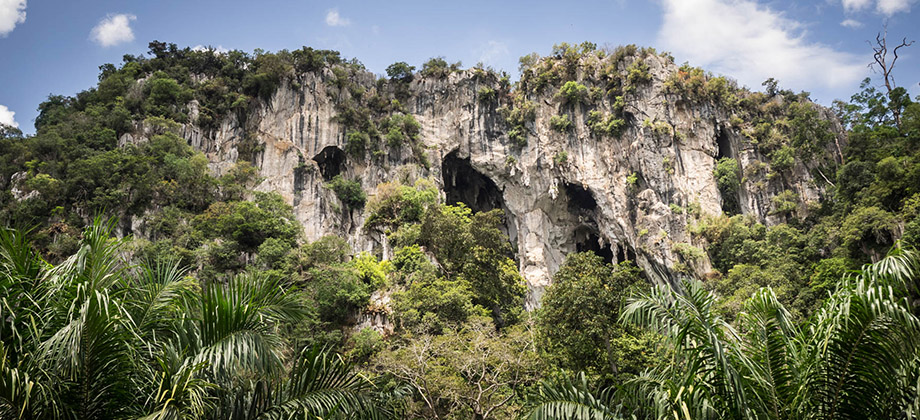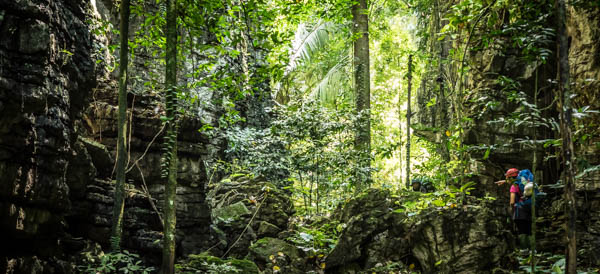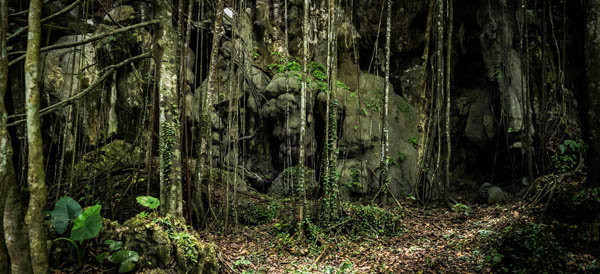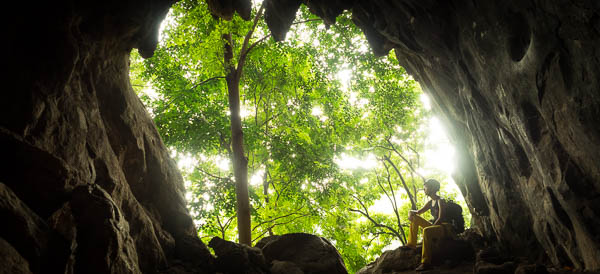Senyum Caves
Senyum Cave Complex
PROTECTED STATUS :
Senyum Caves (Malay: Gua Senyum) are a network of large chambers and caves that lie scattered around the periphery of a fairly large limestone complex. The complex is one of two, the other being the
Jebak Puyuh cave complex, that lie within the north-western limits of the Jengka Forest Reserve. The two complexes are surrounded by palm oil plantations and have a swath of lowland forest separating them. Sadly, the forest reserve is slowly getting chipped
away over time. According to
hutanwatch, with data from CFS watch, approximately a thousand hectares of forest cover have been lost between 2001-2016.
The Senyum cave complex is topped by Mount Senyum (
elevation : 486 m), which is really more of a hill than a mountain. A trail to the summit does exist, but it is quite precarious in certain sections, as it involves both scrambling up steep inclines as well as edging across narrow metal platforms that are affixed to the sides of the rock with long drops below. Please bear in mind that a guide is mandatory for a peak ascent, so be sure to inquire at the management office before setting off.
Getting There
The quickest way to get to Senyum Caves from both the east and the west coast of Malaysia would be to take the East Coast Expressway. Get off the expressway at the 821 Chenor exit, and follow the road until you pass through the toll plaza. Turn right on to the 83 Bandar Jengka Jerantut road at the T-junction and head northwards for 7 kilometres. Turn left on to Jalan Utama Jengka 8,9,12,13, and follow the road for 12 kilometres. Turn left once again, remaining on Jalan Utama Jengka 8,9,12,13, and travel for 5 kilometres until you make your way around the water treatment plant. Turn right at the T-junction and continue for 2.5 kilometres along Jalan Termeloh - Felda Rumpun Makmur. Turn right once again at the yellow sign that says 'Jalan Masuk Gunung Senyum' (English: Entrance to Senyum Mountain) and continue until you reach the entrance to 'Taman Eko Rimba Gunung Senyum'. It will take you about half an hour to get to Senyum Caves from the 821 Chenor exit.
The route to Senyum Caves from the 821 Chenor exit of the East Coast Expressway
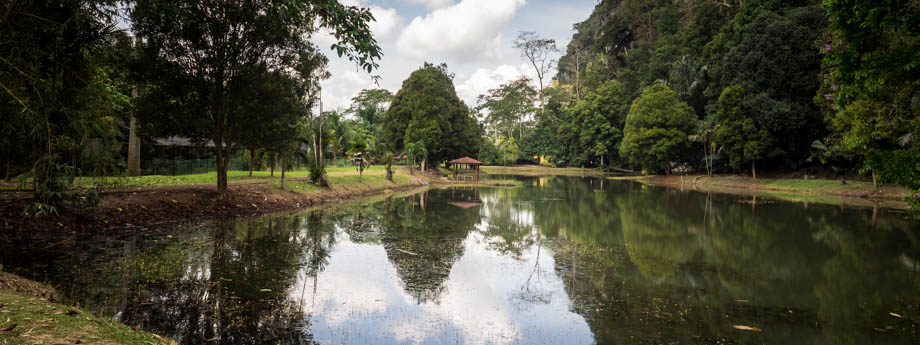
Pejabat Hutan Daerah Temerloh
Location: 28000 Temerloh
Telephone: +60 9296 2755
Fax: +60 9296 2359
There are plenty of facilities that can be found within the park, which include both chalets and large campsites. There are various halls for events and functions, basic kitchens, and food stalls that are apparently only open on the weekends. The toilets are pretty run-down though, but at least they are functional, so no digging will ever be required! If you do somehow get bored with the caves (although I don't see how that could ever be the case!), there is also a dilapidated traditional wooden Pahang house that you can explore that happens to be more than a hundred years old.
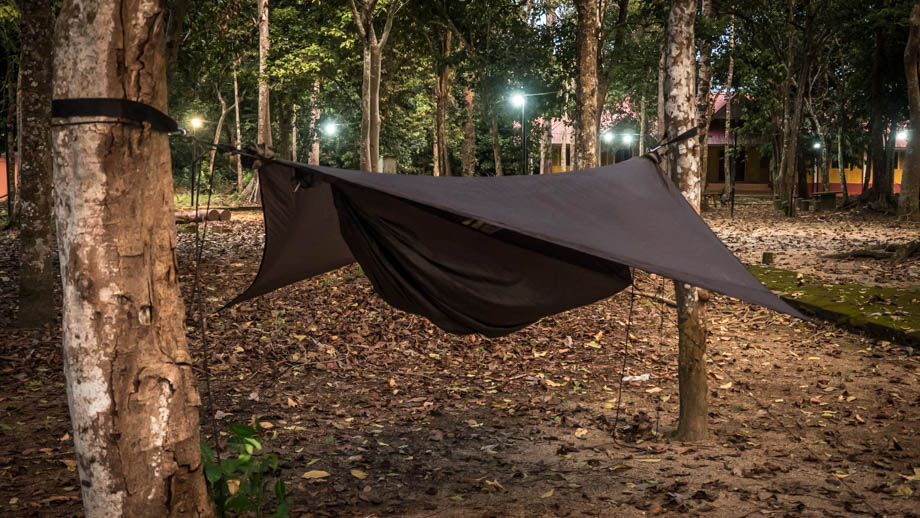 My Hennessy Hammock setup in the campsite
My Hennessy Hammock setup in the campsite
Caving Considerations
Cave environments and their various formations are very sensitive and delicate, so before you even set foot in one, it is imperative that you realise that every caving trip has some sort of impact. Caves do not have many repair mechanisms and cave formations take a long time to form, sometimes taking thousands of years for a growth of just a few centimetres. This is why minimising any impact is of utmost importance. Ensure that you stick to trodden paths in order to prevent the spread of mud to the cave floor as well as body oil to cave walls--oil can create a barrier that prevents the accumulation of minerals and stops any growth of cave formations. If there are no obvious paths, make sure that you take even more care!
When walking around, be sure to constantly keep an eye out for overhead cave formations. With that being said, a
helmet is not only essential protection from bumps and rockfall, but also helps when mounting your essential headlamp. When looking around with your headlamp, be very careful to not shine the light into anyone's eyes. Please also try your best to not directly illuminate wildlife that you may come across.
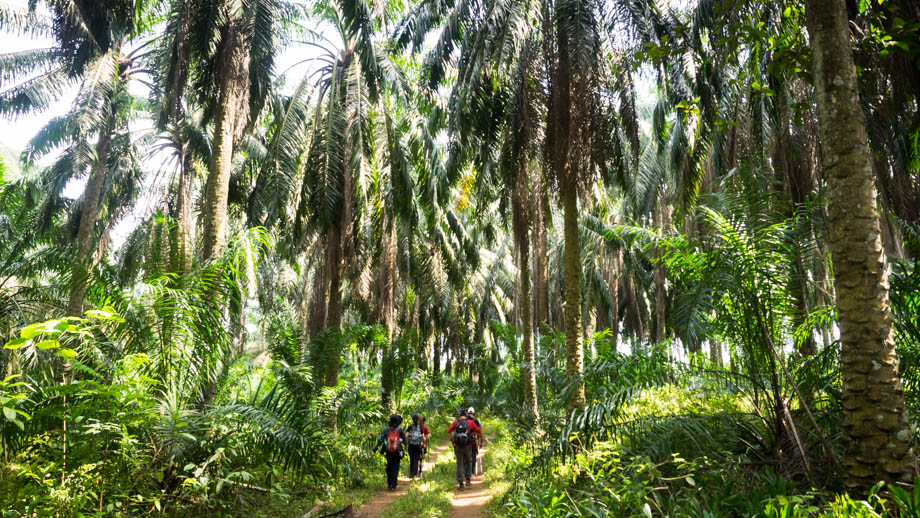 Huge oil palm (Elaeis guineensis) plantations surround the Jengka Forest Reserve
Huge oil palm (Elaeis guineensis) plantations surround the Jengka Forest Reserve
Most people think that the biggest danger for cavers comes from rockfall. Since solution caves tend to be quite stable, falling rocks are generally not much of a concern unless you venture into an unsurveyed or virgin cave, or if there is a caver climbing right above you. Hypothermia, although unlikely, can be extremely dangerous. Ensure that you dress appropriately for the cooler temperatures of caves, and keep an eye on your fellow cavers. Shivering is present in those who are mildly hypothermic, and starts to become uncontrollable as temperatures continue to drop. Coordination and judgement are affected, and even speech can begin to slur. Once hypothermia progresses from mild to moderate, the shivering starts to decrease and can even completely cease. Make sure that you take action as soon as you notice the earlier signs, as severe hypothermia can lead to unresponsiveness, erratic heart rates, and eventual death.
Cave with care.




